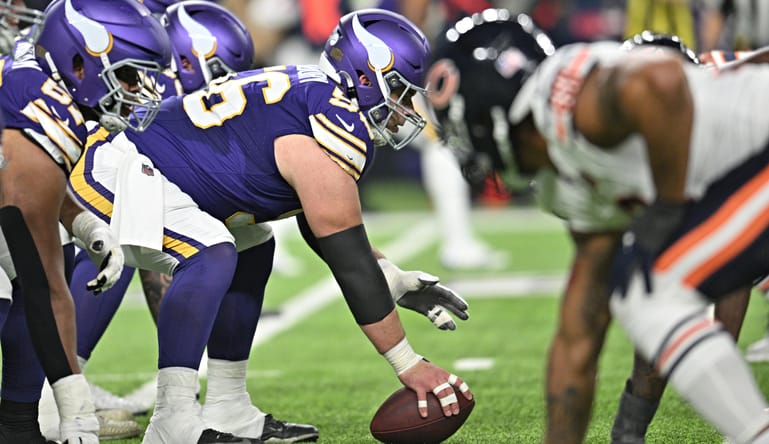Vikings Get a Nice Little Cap Boost

The Minnesota Vikings were active in this year’s free agency week. Entering the offseason with a ton of cap space allowed the club to be aggressive. Some long-term holes, like the offensive and defensive lines, were fixed by throwing enough money at some significant upgrades.
Vikings Get a Nice Little Cap Boost
That valuable cap space is now gone, and the franchise has also borrowed from next year’s cap. GM Kwesi Adofo-Mensah will be happy about his newest cap relief.
New Cap Space

When the Vikings said goodbye to longtime starting center Garrett Bradbury, they did so with a June 1st designation, meaning the move wouldn’t hit the books until June 1st, or June 2nd, technically. That allows the franchise to move a part of the dead cap hit into 2026 to lower this year’s burden.
Over The Cap’s Jason Fitzgerald posted Sunday: “June 1 marks the final day of the NFL calendar where any future bonus money accelerates into the 2025 league year if a player is cut or traded. Starting tomorrow, the rules now allow the team to defer all of that acceleration to 2026 if they move on from a player. June 2nd also marks the day when the NFL will officially process the post-June 1 designations made earlier this year. Here is a look at how much will be gained from each of the moves:”
Specifically for the Vikings, he added: “I thought this was a surprising use of a post June 1 since the dead money deferred to 2026 is so low, but I guess every penny counts. Bradbury’s cap number drops from $6.064 million to $814,000 with the release. He will count for $1.628 million on the team’s 2026 salary cap. Bradbury is on a two-year contract with the Patriots that is worth $9.5 million. The Vikings have around $19 million in cap room, most of which will be carried over to help out with the team’s 2026 cap situation, which is currently the 3rd worst in the NFL.”
Use of Cap Space

The Vikings open a $5.25 million budget, boosting the total cap space to about $19 million.
Of course, the front office could spend some or all of that by adding another free agent or two. Cornerbacks Mike Hilton and Asante Samuel Jr. could address that weakness, running back Cam Akers could slide into the CB3 role, and Justin Simmons is a more experienced safety option than Theo Jackson.
Another use is to hand out an extension or two. Players in the final years of their deals are Josh Oliver, Joshua Metellus, and Ivan Pace Jr. The last two are no-brainer extensions anyway.
Most of that money, however, will be kept to keep flexibility for in-season moves. A trade comparable to the T.J. Hockenson one in 2022 could be on the table. Finally, cap space that isn’t spent will carry over to the 2026 season. Considering Minnesota’s cap debt next year, it makes sense to keep some of it.
Garrett Bradbury with the Vikings

Bradbury was the 18th overall pick in the 2019 draft and immediately clinched the starting spot. He was the starter in the last six years and played in 88 games with the purple franchise. An undersized center, Bradbury was an asset in the running game because of his moving skills in space, but he lacked the power to hold up against powerful defensive tackles, especially in the passing game.
Most of his play was below average, but he was still a starting-caliber player throughout his Vikings tenure. Bradbury signed with the Patriots shortly after his release, and he will protect Drake Maye in the upcoming season, reuniting with former Vikings wideout Stefon Diggs.
Bradbury’s Replacement

To take his place, the Vikings signed veteran center Ryan Kelly. He arrived in free agency, signing a two-year contract. Kelly just turned 32 and is a four-time Pro Bowler, as recently as in 2023.
He’s getting up there in age, and injuries are a concern for him, but when he is on the field, Kelly is still one of the better centers in football. Last season, he produced an above-average PFF grade of 67.0.
Editor’s Note: Information from PFF, Over The Cap, and Sports Reference helped with this article.

You must be logged in to post a comment.